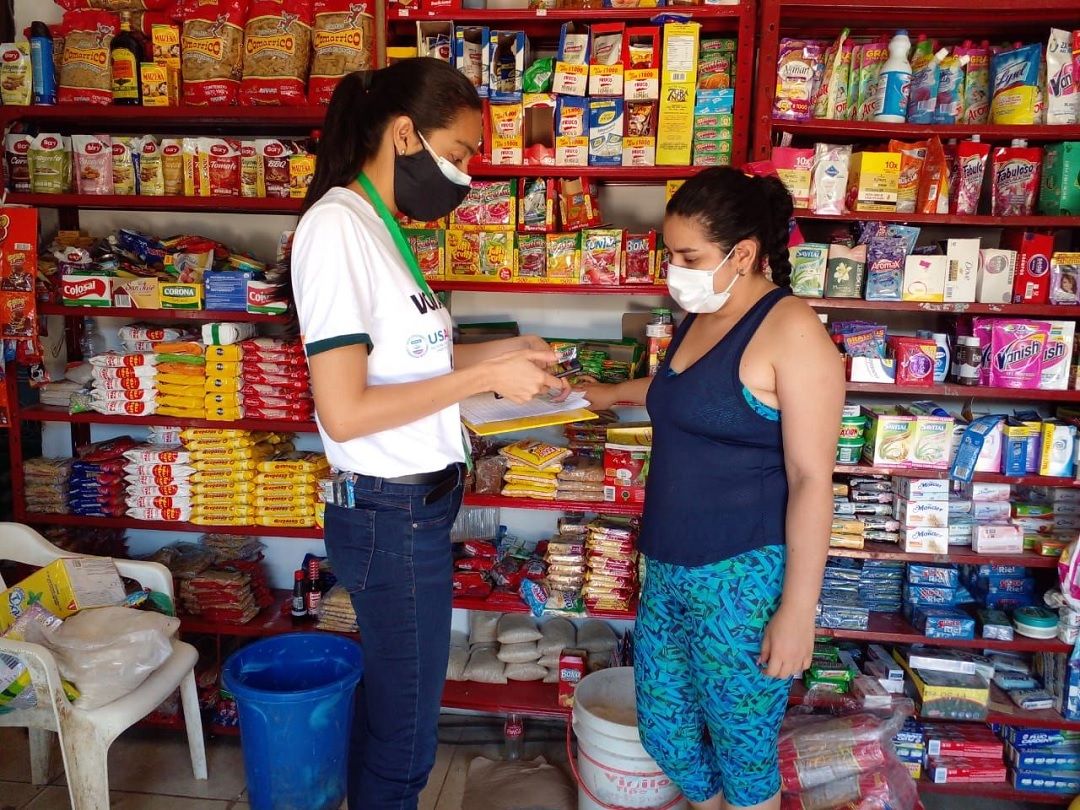The Scale and Impact of the Crisis on Colombia
The Venezuelan migrant crisis is second only to the Syrian conflict in terms of the number of people forced to flee their home country. Around 5.7 million Venezuelans have fled due to a dire combination of political instability, violence and insecurity, and a protracted, crippling economic crisis.
Colombia has absorbed the largest share, more than 1.7 million people, in addition to about half a million Colombian returnees displaced during the Colombian civil war, and another 500,000 migrants in transit to other countries. An additional 3.4 million people regularly commute from Venezuela to Colombia to access basic services.
Countries in the region have come together to formulate a coordinated response to the crisis and this is set out in the Regional Migration Response Plan (RMRP) which is updated each year based on a needs assessment, with contributions from GOAL and other responding organizations. The latest RMRP projects the overall number of Venezuelans fleeing their country to reach 8.1 million by the end of 2021.

Barrio Resiliente team member verifies information of pre-registered local businesses in Villas de Girardot Settlement, Bucaramanga. To date, the project works with 44 businesses in that area.
Neighboring countries, such as Ecuador, Perú, and Chile have imposed entry visa restrictions on Venezuelans since 2019 to curb the influx of refugees, which means that Colombia will remain primary destination for the vast majority of the migrants fleeing from Venezuela.
A large portion of the migrant population in Colombia are gathering in informal settlements in the outskirts and open spaces of smaller and medium-sized cities, placing tremendous stress on local community resources. Migrants are living in desperate conditions, often sleeping in the open air with little or no access to basic services.
Local governments and city administrators are struggling to cope with the growing need as the crisis shows no sign of abating. Across Colombia, more than three million are in urgent need of health services, food assistance, and protection from exploitation, sexual and gender-based violence, and other threats.
It is important to note that the influx of Venezuela migrants is part of a multi-layered crisis impacting Colombian society which is still reeling from years of violence and displacement during the recent civil war, combined with the public health and socio-economic impact of the COVID-19 pandemic. Colombia has been hit hard by the pandemic, with over 2 million cases and 56,000 deaths, and cramped migrant settlements providing conditions for rapid spread.
GOAL’s Response
Recognizing the complexity of Colombia’s humanitarian crisis, GOAL launched operations in 2019, with a holistic approach designed to meet the most urgent life-saving needs, while also focusing on longer-term solutions and resilience. The initial response, funded by Irish Aid, reached 1,000 Venezuelan families in transit along the perilous migrant routes. Since then, GOAL has significantly scaled up its response with support from USAID Bureau for Humanitarian Affairs, delivering services to Venezuelan migrants, Colombian returnees, and vulnerable host communities in four departments: Norte Santander, Santander, Atlantida and La Guajira.
In addition to responding to the needs of migrants in transit, GOAL is also working to develop durable solutions through interventions in informal urban settlements and inclusive economic development. Through GOAL’s “Barrio Resiliente,” or Resilient and Inclusive Neighborhood Approach, GOAL works in partnership with communities, local and state government, the private sector, civil society, and academic institutions to improve policies and develop practical solutions that can be replicated and scaled. Through Barrio Resiliente, GOAL is leading a consortium of partner organizations in efforts that include:
- Supporting small and micro-business through increased access to credit and business development services, and through building new market alliances and networks
- Developing high potential and sustainable market systems such as the Blue Economy in fisheries and eco-tourism.
- Developing affordable housing and shelter solutions
- Instituting early warning and response systems to protect vulnerable families against disaster risks
- Improving access to basic services including water and sanitation and protection services
- Strengthening social cohesion through community projects and facilitating engagement among different social groups, prioritizing youth engagement
- Working in partnership with city administrators to strengthen urban planning to address rapid expansion of informal settlements and adopt policies that incorporate a resilient and inclusive neighborhood approach.
